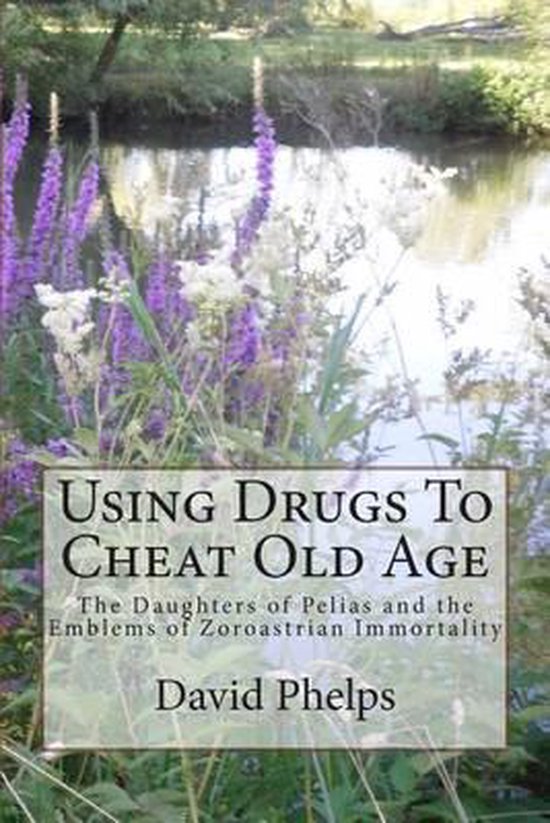Using Drugs To Cheat Old Age The Daughters of Pelias and the Emblems of Zoroastrian Immortality
Afbeeldingen
Artikel vergelijken
Uitgever: Createspace Independent Publishing Platform
Auteur:
David George Phelps
- Engels
- Paperback
- 9781511727235
- 09 augustus 2015
- 174 pagina's
Samenvatting
This book, which takes its rise from the graphic, and indeed gruesome, tale of the daughters of Pelias and their deluded dismemberment of their aged father in the vain hope of conferring immortal youth upon him, attempts to begin to explore anew the role and meaning of the Greek myths, and what light they can throw on or have thrown on them by the now revived discipline of comparative Indo-European religion and mythology, revivified and re-established on new foundations during the last century by the patient and assiduous labours of Georges Dumézil and a small band of co-workers, without the dubious aids of psychoanalytical prognostication or bellelettristic rhapsody. Reflecting on this myth it appeared to me that, whereas in some cases immortality might be achieved by other means by immersion in the elements of water (or at least, in certain particular waters) or fire, or by simple translation at the behest of the gods, the main medium for achieving immortality by means of operant magic that seemed to be contemplated in the classical world (whether honestly and successfully, as in the case of Aeson, or fraudulently and unsuccessfully, as in the case of Pelias) was by the use of magical herbs. And so it further occurred to me that this fact might offer some explanation, if the ancient Iranians had thought about these matters in much the same way as the ancient Greeks, of the otherwise rather puzzling fact that the member of the six principal Zoroastrian Amesha Spenta or Beneficent Immortals that represented the idea of Immortality, Ameretât, should have had as its emblematic concrete symbol The Plants, leading to more extended reflections on the role of those mysterious and ambiguous entities known to the Greeks as pharmaka, to the Romans as venena, and to us as drugs, that can kill you or cure you or render you insane, yet that are culled from the apparently innocuous natural vegetation of the woods, the fields, and the mountains, and that supply the essential foundations both of medicine and of witchcraft and sorcery alike. Discussion of the paired Zoroastrian immortals Haurvatât and Ameretât, however, led inevitably to a consideration of the near-homonymous errant Islamic angels Hârût and Mârût; and the story of these angels bore such marked similarities to that of Susanna and the Elders in the biblical Apocrypha that one was inevitably also led on to consider those two stories together. And hence the genesis of the present little monograph, which is perhaps by way of a kind of conceptual archaeology conducted by imaginative reconstruction, offering a tentative explanation of Iranian facts by the indirect means of an investigation into the classical Greek and Roman data that can be presumed to be parallel to them.
Productspecificaties
Wij vonden geen specificaties voor jouw zoekopdracht '{SEARCH}'.
Inhoud
- Taal
- en
- Bindwijze
- Paperback
- Oorspronkelijke releasedatum
- 09 augustus 2015
- Aantal pagina's
- 174
- Illustraties
- Nee
Betrokkenen
- Hoofdauteur
- David George Phelps
- Hoofduitgeverij
- Createspace Independent Publishing Platform
Overige kenmerken
- Extra groot lettertype
- Nee
- Product breedte
- 152 mm
- Product hoogte
- 10 mm
- Product lengte
- 229 mm
- Studieboek
- Ja
- Verpakking breedte
- 152 mm
- Verpakking hoogte
- 10 mm
- Verpakking lengte
- 229 mm
- Verpakkingsgewicht
- 263 g
EAN
- EAN
- 9781511727235
Je vindt dit artikel in
- Taal
- Engels
- Boek, ebook of luisterboek?
- Boek
- Studieboek of algemeen
- Algemene boeken
Kies gewenste uitvoering
Bindwijze
: Paperback
Prijsinformatie en bestellen
Rapporteer dit artikel
Je wilt melding doen van illegale inhoud over dit artikel:
- Ik wil melding doen als klant
- Ik wil melding doen als autoriteit of trusted flagger
- Ik wil melding doen als partner
- Ik wil melding doen als merkhouder
Geen klant, autoriteit, trusted flagger, merkhouder of partner? Gebruik dan onderstaande link om melding te doen.

